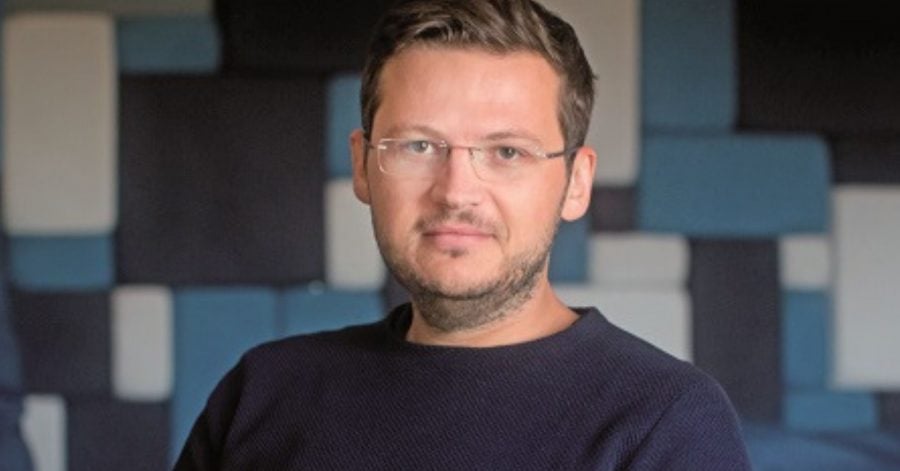Fintech was the second biggest vertical in SEE when it came to funding rounds in 2021. According to Statista, in 2022 the Romanian FinTech market’s largest segment will be that of digital payments, with a total transaction value of €7M. Due to the digitalizing of the commerce sector, amongst others, online payments will gain momentum, followed closely by InsurTech and RegTech.
Today, The Recursive sits down with Adrian Cighi, a co-founder of the Romanian Fintech startup Pago, to discuss how it is to develop a Fintech solution in Romania, who or what are their main competitors, and how do they plan to keep improving the mobile app.
Pago offers access to almost 400 service providers in Romania, in one mobile app. Over 5M digital payments have been made through it since the launch in 2017. Users can pay bills, local taxes, and even insurance.
They began the year by launching money transfers via phone, and Mozaik Investments joined their team with an investment. Security is one of their priorities and their main 2022 goal is to scale their solution abroad, starting with Poland and Italy.

THE RECURSIVE: What inspired the launch of Pago?
ADRIAN CIGHI: We had this idea that there must be a better way to pay bills in Romania. We looked at how this problem was solved in other countries. So, basically, for the first versions of Pago, we tried to copy what they were doing in the US.
We connected the suppliers, and then the users had all the bills downloaded automatically and they could see all the payments. You can choose to pay for your office, or your parents as well.
What made you confident you can do this in Romania?
We thought this must change. This is a tide that is going to rise and it will go towards card payments or online payments, at least. It’s a good opportunity to be bold.
When people started believing in us. We met the managers of MasterCard in Romania quite early. They were the ones who inspired us to do something about this, because over 80% of the bills at that time – 2016, were paid with cash.
They helped us from the beginning by setting up meetings with suppliers, payment processors, explaining to us how this whole ecosystem works for processing payments, and how to have everything secured, amongst others. The next supporter was Banca Transilvania because they already had contracts with suppliers.
With them by our side, we could focus on developing the app, the user experience, and the processing of the payments, while making sure we got to the suppliers was their part. With these two partnerships, we managed to launch the app in 2017.
Can you guide us through the technological part of adding all these suppliers in one app?
In the beginning, we used API (Application Programming Interface). Then we used the online sites, the platforms that they developed for their clients, where they showed the bills and the payments.
We integrated those platforms via an internal API or HTML scraping. It took us a while. This is another difficult thing about what we do to create the initial connection. The hard part is getting it to work 100% or as close to 100% accuracy. For example, during Black Friday, whenever there is a little change on the site, like promotions, we need to change the scraping method.
Over the last few years, we developed the technology that helps us adapt fast to these changes. Sometimes automatically, we don’t need any intervention from our team. The accuracy of the scrapers is a very important KPI to us to get it as close to 100% as possible. Lower than 100% means there is a probability that some people might not receive the bills this month, or if they paid the bills using another method, it doesn’t show up on the app.
What would you need suppliers to do to have a better flow on the mobile app?
It would be great if they would all develop APIs. This is something that we are looking to do ourselves in the next few months. We want to develop the APIs for them, especially for the medium-sized, regional, suppliers that don’t have their own IT department.
How do you see yourself compared to the competition?
>>> Our biggest “competitor” is habit. People are used to paying their bills in a certain way.
It takes a few minutes to set up the Pago app and connect to all the suppliers. Then, you get a nice experience when everything happens automatically and you use the rest of your time for something else.
>>> In terms of services for paying bills, the general competitor would be bank apps.
But the experience is not the same, you still need to do things manually to manage the payments. You have to search for the bill wherever you receive it, then fill in the amount that you need to pay. In some cases, you might not even receive the bills or remember what was paid. It’s especially difficult to pay bills for other locations. If you don’t live there, you can’t manage the mailbox, and you don’t see the invoices.
>>> The next “competitor” is the fact that the majority of the bills in Romania are paid in cash.
Why do you think people will choose Pago instead of traditional methods, the banks’ apps, or cash? Do you educate users in some ways?
We made some videos about how to set up the app for the onboarding process and we plan to do more. What makes them use it will be convenience and saving time.
We have high retention after the first payment. This is what makes us believe that the product is useful. It’s over 85%. This year, we will add a person on the team who will focus 100% on understanding where these points of churn are by discussing them with our users.
What can you tell us about your target audience?
Most users are between 35-years old and 45-years old. I guess this is where we start getting more bills and it starts becoming a pain. In terms of gender, we have 65% men and 35% women. I guess the men pay the bills in most families.
We have a lot of Romanian users who live in other countries, like Italy, Spain, Germany, and the UK. They pay for the family at home, maybe for the kids or parents.
What can you tell us about your business model? Do you consider the monthly fees a barrier to the adoption of this method of payment?
We have subscriptions in the app, but you don’t need one to begin with, not if you pay the bills for one apartment. The payments for the first four bills are free every month. You don’t pay any commission.
We came up with this number when we noticed that around 75% of our users only pay 4 bills per month. If you live in a house or you pay for other locations, then you go above this number. That is when you start needing the subscription, which is one euro for five to eight payments, and three euro for nine or more.
We cover the payment processing cost for suppliers that don’t cover these costs. Now, we have close to 400 suppliers in the app, but not all of them pay us for the processing. So out of this subscription model, we cover those costs.
Do you believe the market is ready?
When we first launched subscriptions, many people thought we were crazy. They said: “you are going to kill your app”. The conversion from active users to subscribers is close to 25%, in other countries this is the custom.
What prompted you to launch the new feature, that of real-time money exchange through the app via phone numbers?
This is something we wanted to add for a while. We had this idea two years ago, Visa and MasterCard were keen on launching this service in Romania, and the user experience is very nice. You can transfer money from any card to any other card issued by a bank in Romania. It also works with Revolut because it has local IBANs. You can make transfers, any time of the day, no matter if it’s on the weekend or a public holiday.
Can you tell me about the safety protocols of these types of transfers?
It’s the same as making online card payments. When you add a card from which you want to send money, you confirm the transactions with your 3D secure code, which you receive by SMS, and you can also confirm it with the face ID or a fingerprint. We don’t store the card information. This is stored by the payment processor.
What impact do you think digital payments and the loss of cash will have on the economy?
I think it’s saving a lot of time and a lot of hassle. Cash is a pain to manage, it’s more convenient to use electronic payments, of course, you have to get comfortable with the security. Visa, MasterCard, and the banks are doing a really good job of getting the message that this is safe. They invested huge amounts of money to make sure the transactions were safe.
In the EU, we have the safest system for online payments. Other continents don’t have this 3D security, two-factor authentication. Card payments take less, you have the transaction history in one place, you can ask for a refund if you think your payment was not processed correctly, or even if you were not offered the service that you were promised. There are all these extra options. You are in control of your money and I think this is the future.
What is the plan for 2022 – are you targeting a round of funding, or looking into crypto transfers, for example?
We don’t plan to go into crypto. In terms of funding, we have a new investor, Mozaik Investments, a relatively new fund in Romania, but with high ambitions and money to invest. Over the next few years, we will hear more about them.
We plan to accelerate our international growth. We have launched the app in Poland in the beta version, Italy is next, then probably Spain. There are a few other countries that we identified with a high potential for what Pago does.
The problem that we’re solving is not particular to Romania. It’s in almost every country that we look at. If people are used to direct debit, that is a habit that is more difficult to break. This is why we focus on countries where people still pay their bills manually.
Why did you opt to scale the solution in Poland, Italy, Spain?
It’s just a matter of market size. For us, the cost and the time it takes to develop in a new country is almost the same, regardless of the number of people in that country, be it 2M people in Slovenia, or 60M in Italy. But the opportunity is bigger in countries like Italy.
We are also looking at Croatia. We wanted to go to Croatia a couple of years ago, but we did not find a local partner bank. Since they don’t have euros, we need a local bank. Now we found the bank and we will most probably go forward with it by the end of the year.
What FinTech trends will dominate in the next 2-to 3 years?
Fintech is one of the fastest-growing sectors in the world. There are many opportunities, and I don’t think there are enough startups to benefit from them in countries that are off the radar, like Romania and others from our region.
I think this trend of buy-now/pay-later is coming to the region, but there are many more. The interaction with the financial sector takes up too much time or is too much of a hassle. This is a big opportunity for us.
For example, in insurance, we offer this experience where you see all the offers from all the insurance companies and you pick the one that’s best for you. I think this kind of experience we could offer for other financial products, like loans, deposits, investments, not crypto, but other investments.







